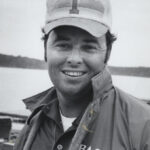Gene Patton, affectionately known to millions as “Gene Gene the Dancing Machine” from The Gong Show, passed away at 82. His unexpected fame, born from his unassuming presence as an NBC stagehand, transformed him into a beloved pop culture icon. This is the story of how a man who simply loved to dance became a television sensation, bringing joy and laughter to audiences across America.
From Stagehand to Center Stage: The Magic of The Gong Show
The Gong Show, a creation of the prolific Chuck Barris, was daytime television at its most wonderfully absurd. The premise was simple: amateur acts, often spectacularly untalented, would perform for a panel of celebrity judges. If the act was deemed too awful, a judge would bang a giant gong, mercifully ending the performance. Amidst this organized chaos, “Gene Gene the Dancing Machine” emerged as a beacon of pure, unadulterated fun.
Gene Patton wasn’t a planned act; he was part of the behind-the-scenes crew. But Chuck Barris noticed something special. As Barris recounted in his memoir, Confessions of a Dangerous Mind, he saw Patton dancing alone in the studio, captivated by his unique style. Patton’s dance wasn’t about fancy footwork; it was all in the upper body, a joyful, infectious shuffle that exuded pure happiness. Barris, recognizing this natural talent, decided to bring Patton into the show.
To the infectious tune of “Jumpin’ at the Woodside,” a classic jazz number popularized by Count Basie, “Gene Gene the Dancing Machine” would make his entrance. The curtain would rise, revealing Patton in his signature painter’s cap, and the studio would erupt. His dance moves were simple, repetitive, and utterly captivating. The charm wasn’t in technical skill, but in the sheer joy and enthusiasm Patton radiated. He wasn’t a professional dancer; he was just Gene, the stagehand, letting loose and having a good time, and that was precisely why audiences adored him. His performances became a highlight of The Gong Show, a moment of spontaneous, unscripted delight in a show built on planned mayhem.
Beyond the Gong: Patton’s Enduring Legacy
The moniker “Gene Gene the Dancing Machine,” playfully bestowed by Barris, stuck, becoming synonymous with Patton. He embraced the role, appearing not only on The Gong Show but also in The Gong Show Movie (1980). Years later, he even played himself in Confessions of a Dangerous Mind (2002), the surreal film adaptation of Barris’s memoir, starring Sam Rockwell as Barris and directed by George Clooney. Even after diabetes led to the amputation of both his legs, Patton’s spirit and the memory of “Gene Gene the Dancing Machine” remained vibrant.
Before his unexpected television fame, Patton’s life was rooted in Pasadena, California. He worked as a janitor before breaking barriers in 1969 by becoming the first African-American member of the International Alliance of Theatrical and Stage Employees, Local 33. His union acknowledged his impact, calling him “a legend in our eyes.” This recognition speaks volumes about his character and his contributions both on and off screen.
Gene Patton’s legacy extends beyond his dance. He was a reminder that fame can be found in the most unexpected places, and that genuine joy is infectious. “Gene Gene the Dancing Machine” wasn’t famous for being polished or perfect; he was famous for being himself, for sharing his uninhibited happiness with the world. He brought smiles to millions simply by dancing like no one was watching, even when everyone was.
He is survived by his children Bonnie, Carol, Sidney, and Courtney, his sister Henrietta, nine grandchildren, and six great-grandchildren. Gene Patton, “Gene Gene the Dancing Machine,” will be remembered not just as a dancer, but as a symbol of unexpected joy and the magic of television.

